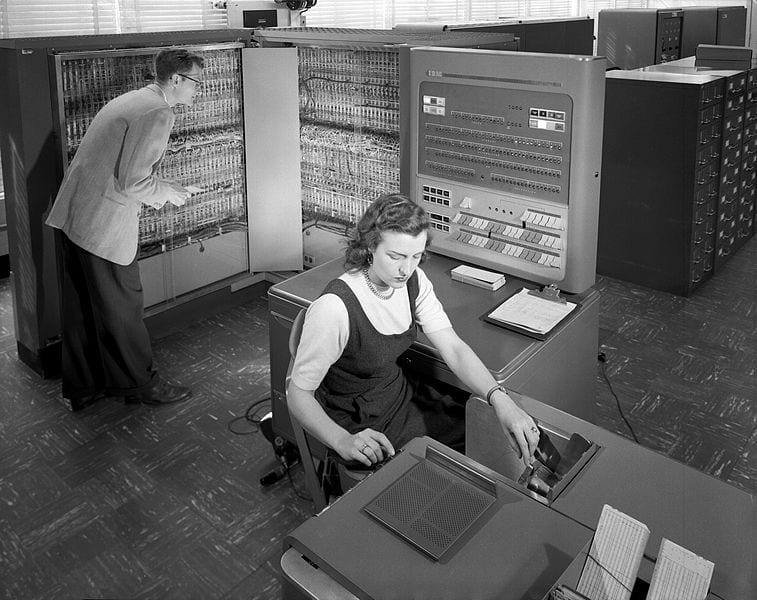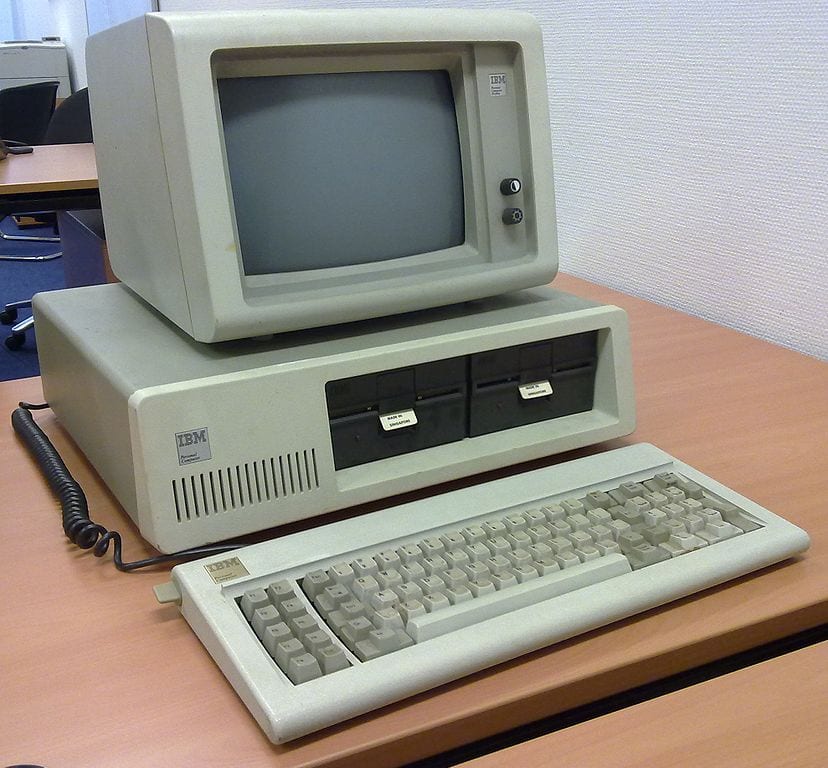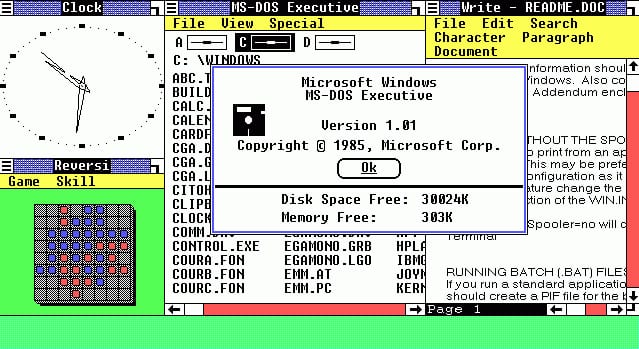Intranet usability and the death of the corporate app store
This might sound like a crazy thing to say in the heyday of the app marketplace, but we need to eliminate applications from the computer user’s experience.
“Application” is a technical term that means “a piece of software” and traditionally belonged in the realm of IT departments. Its prevalence in mainstream culture indicates the triumph of computer terminology over more human language.
Story of computers: evolving to be more human
But the last 70 years tell the story of computers becoming more human, adapting to how real people operate. Early computers required their human users to speak in the language of the computer. Using punch cards to run computer programs? People were practically speaking in ones and zeros.

IBM 704 – an early computer requiring punch cards
The first personal computers, with their black screens and green text command lines still required people to speak in the language of computers. Typing in executable commands on a blank screen? Today that sounds like something only a software developer would do.

IBM 5150 computer,
The invention of “windows” and the graphical user interface (GUI) represented a huge step forward in humanizing computers. No longer were users stuck writing direct commands. Instead we monkey-like beings were able to open programs and interact with machines through visual “desktops” fashioned after our physical experiences.

Windows 1.0 | Used with permission from Microsoft
The creation of the mouse gave our humble, clumsy race the opportunity to interact more physically with our technological creations. Modern touch screens have delivered the next big step forward, further humanizing the physical interaction with computers. However, the design of software, websites and intranets still has a long way to go.
Application-based interfaces are immature
The entry of “application” into our everyday nomenclature is a step in the wrong direction. The marketing slogan “there’s an app for that” taught average humans to speak the language of computers more effectively.
Yes, the iPhone and Android app marketplaces are part of a huge shift in technology that is transforming the world. But as Paul Miller, CEO of the Digital Workplace Group, so clearly explains, as a society we’re at a very immature stage in this new technological revolution. Our use of smart phones and computer applications today will eventually look like an infant’s rough play with a spoon before she learns its purpose and how to eat an ice cream sundae.
Intranets, applications and usability
To bring this pie-in-the-sky thinking back to the ground a bit, let’s take a quick look at intranet best practices.
Most intranets are designed poorly, with navigation that simply offers a bunch of content organized how the HR department has sorted its jumbled file share.
Conversely, the very best intranets are purpose built to help employees complete tasks – specific, common, concrete tasks. From start to finish the design of these intranets relies on user testing and usability-enhancing activities.
As web usability guru Gerry McGovern says, information is a task.
A typical best practice in the design of intranet terminology is to use words that indicate the tasks to be completed, rather than the applications used to complete those tasks. For example, instead of having a link on the homepage that reads “Oracle Internet Expense,” which is the official name of the application, better to write “Submit expense reports.”
This example epitomizes the “application versus task” battle behind intranet design. DWG’s intranet research and benchmarking database is full of other humanizing intranet usability tips.
Usability: Removing technology from the user experience
The entire field of usability and user experience design exists to answer the question “what do people need to do with this interface and how can we help them do it easily?”
Some people call well designed software “intuitive” because as much as possible it removes technology from the equation to create a human-oriented experience.
In the ultimate vision of the computer interface, I don’t have to think about which app to use, only what I want to do. This middle ground of technological “application” language that users today must navigate will recede into the past just as have punch cards, command lines and (eventually) computer mice.
Are large enterprises paying attention?
Large enterprises can learn a strong lesson from this coming change. They sit upon vast technical landscapes, with just one company offering hundreds of applications to thousands, perhaps hundreds of thousand of employees around the world on dozens of different types of devices.
Many of these companies struggle with and really fail to provide a good user experience for employees. Single sign-on is only the very beginning of the integration that large companies should strive for. Companies at the leading edge of digital workplace design don’t think about applications, but about users and their tasks.
A Fortune 500 or similar company should be asking “how do we create a seamless computing experience for our employees?” “How do we craft our intranet to help real human beings complete their jobs with great ease?” Those that aren’t will find themselves desperately behind the curve when the consumer computing industry finally arrives in the app-less near future.
Learn more about IBF benchmarking
Categorised in: Mobile sites & apps, Usability & design
